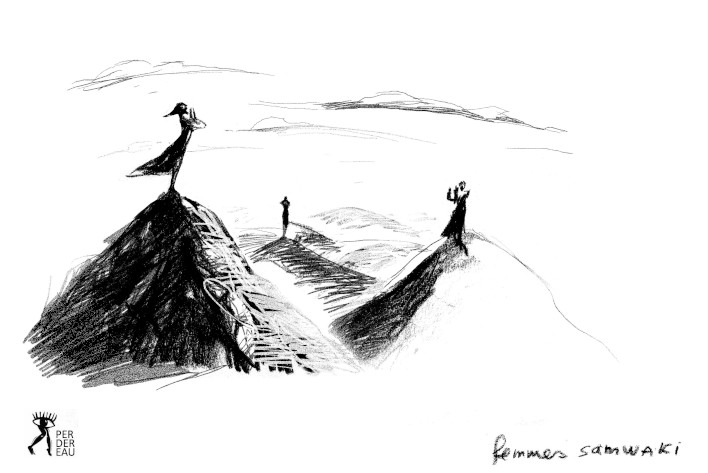The Unrecognised Women of the Fourth World

In 1975, as part of International Women’s Year the first World Conference on Women took place in Mexico City. For the conference a small delegation from the ATD Fourth World took part. Included in the delegation were ATD founder Joseph Wresinski and Alwine de Vos van Steenwijk, then ATD Fourth World International president.
Preparation & Fourth World Women’s Congress
As early as 1974, ATD members started preparing for this conference. From this preparation a draft study of Fourth World woman was written: The Unrecognised Women of the Fourth World. It was presented at the Mexico City conference. During this event Wresinski and de Vos van Steenwijk also brought and shared the Fourth World Women’s Charter drawn up by ATD Fourth World activists during preparation for the Mexico City conference. Then in December 1975, the first Fourth World Women’s Congress took place in Pierrelaye, France.
As part of the articles highlighted this week for International Women’s Day here is an excerpt from The Unrecognised Women of the Fourth World.
Excerpt from The Unrecognised Women of the Fourth World
[..]… Too deprived to conform in any satisfactory way to the language, attitudes and behaviour of the society which surrounds it and from which she comes. The woman of Fourth World is judged, condemned, and repressed in the west as in India, Latin America, and countries of the east. Excluded from cultural and political analysis as well as from our social struggles, the Fourth World harbours (if you can put it this way) the most captive of all women.
Not considered a stakeholder
This woman is not even considered a stakeholder in women’s issues in her country, even less as a possible ally in the everyday struggle. Her condition is neither recognised nor analysed. […]
Rejected to the point of becoming unrecognizable to her sisters because of her impoverishment, will she still be the subject of events planned for the International Women’s Year? Shouldn’t she, more than any other, be at the heart of our concerns for that year?
Double burden
It is on her shoulders that all the shortcomings and injustices of the society around her rest. Since she bears at the same time the weight of the disadvantages that women have in her country and the burden of all the inequalities and deprivations inherent in the poverty of which she is a prisoner. We know that no matter which country, the further down the social ladder, the heavier the subservience of women’s condition becomes and the less means she has to defend herself. Even circumstances likely to temper the near future, are rare. At the very bottom of the ladder, the woman is not only deprived of social, civic and political roles, as if chained to her duties as wife and mother, she is also deprived of all the rewards that being a wife and mother offer. […]
At the bottom of the social ladder, the problem of the condition of women is set out in its entirety, in all its aspects, in its most serious forms. The woman of the Fourth World allows none of society’s failures which tolerate such situations to remain hidden, she alone lays bare all the changes that need to be undertaken.
Highlight fragility
[…] As long as the status of women of the Fourth World remains the same, no woman will really be safe, because that which can be denied to women at the bottom of the social ladder have not become a right set-in stone for all women. With the changing fortunes of life, they can therefore become even more deprived of the right. In short, the woman of the Fourth World highlights the fragility of all the gains that women have made.
The woman of the Fourth World is the touchstone for women’s struggle. As long as the condition of the most destitute women lasts, no other woman will really be safe. For what can be denied to those at the bottom of the social ladder can be denied as an indisputable right for all.

